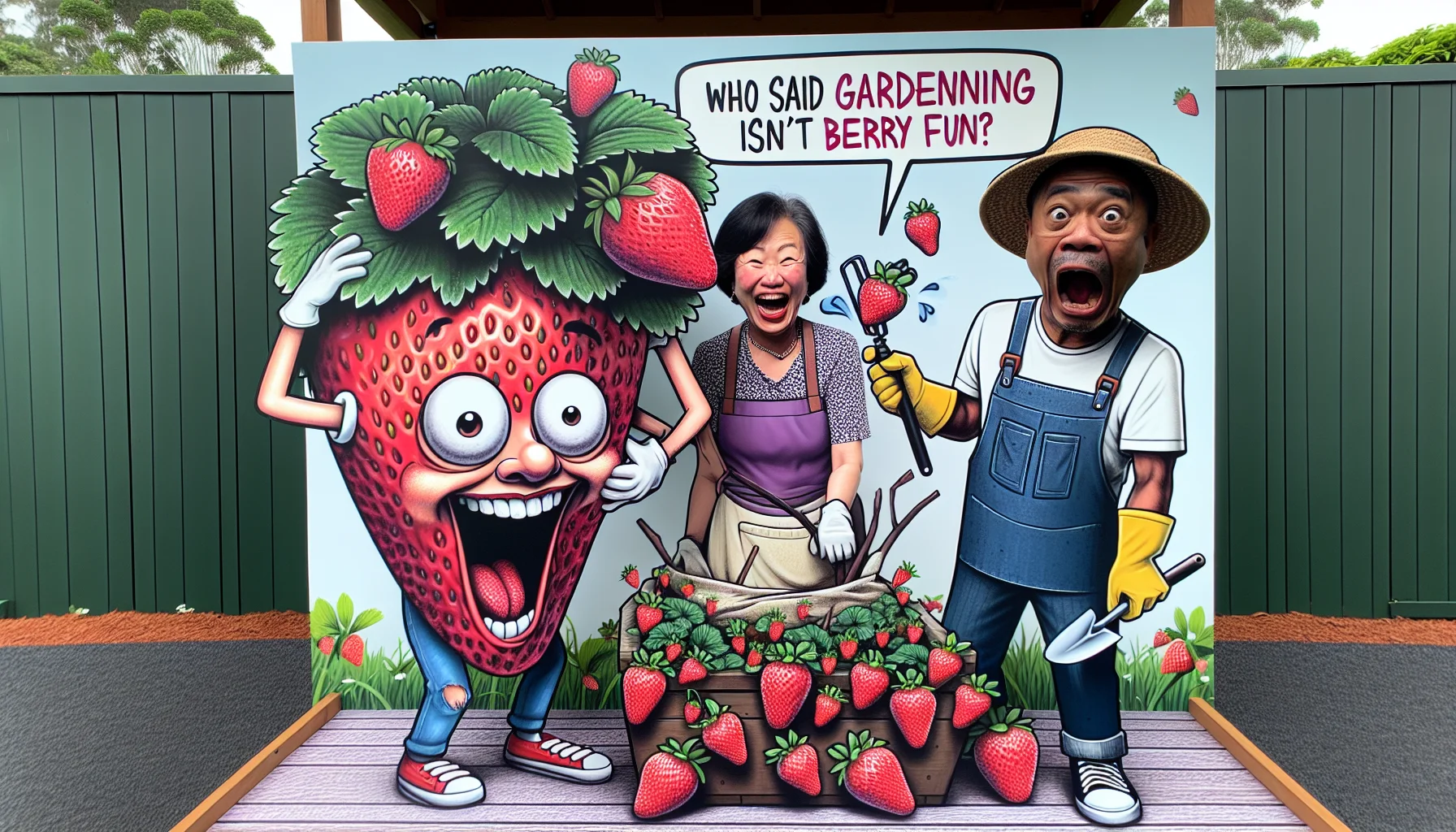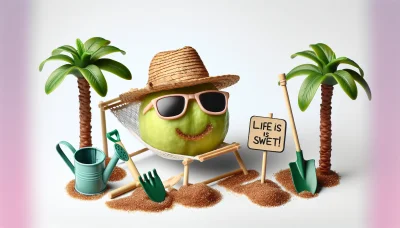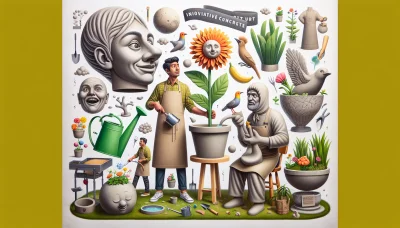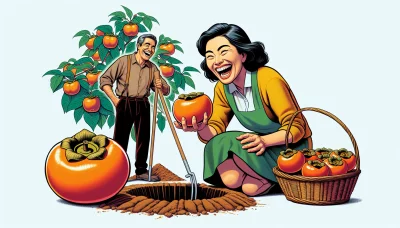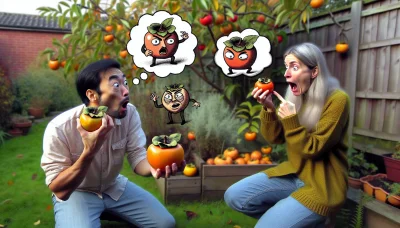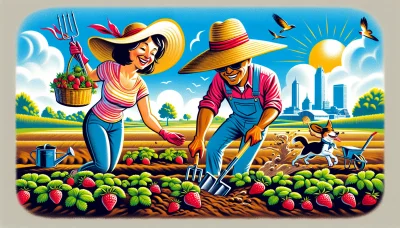How many strawberries per plant Quiz
Test Your Knowledge
Question of
How Many Strawberries Per Plant?
Gardening enthusiasts and fruit lovers alike often venture into the delightful world of strawberry gardening with high hopes and sweet expectations. One of the crucial aspects of cultivating these beloved red berries is understanding the yield you can anticipate from each plant. This knowledge not only helps in planning the size of your garden but also in managing your expectations and ensuring the health and productivity of your strawberry plants. Let's delve into the factors that influence strawberry yield and how you can maximize the fruits of your labor.
Understanding Strawberry Plants
Strawberry plants are a popular choice among gardeners and agricultural producers due to their delicious fruit and relatively easy care requirements. There are three main types of strawberry plants: June-bearing, Everbearing, and Day-neutral. Each type has its unique characteristics and growing needs, which can significantly affect strawberry production.
June-bearing strawberries are known for producing a large, single crop of strawberries each year, typically in June. These plants require a period of cold dormancy to produce fruit, making them ideal for regions with cold winters. Gardeners often prefer June-bearing strawberries for their large, flavorful berries, which are perfect for jam-making, desserts, and fresh eating.
Everbearing strawberries, on the other hand, produce two to three harvests throughout the growing season, usually in spring and late summer. These plants do not require as much cold exposure as June-bearing varieties, making them suitable for a wider range of climates. Everbearing strawberries are great for gardeners who wish to enjoy fresh strawberries over a longer period.
Day-neutral strawberries are the most flexible in terms of fruit production. Unlike the other types, day-neutral plants can produce strawberries throughout the growing season as long as temperatures remain between 35 and 85 degrees Fahrenheit. This makes them an excellent choice for gardeners in areas with mild summers and winters, as they can potentially yield fruit from early summer through the first frost.
Regardless of the type, all strawberry plants require well-drained, fertile soil and at least six to eight hours of sunlight per day to thrive. They also need consistent moisture, especially during the fruiting period, but are susceptible to root rot if overwatered. Proper spacing is crucial to allow for air circulation and prevent disease. Understanding these growing conditions and selecting the right type of strawberry plant for your climate and needs can lead to a successful and fruitful strawberry patch.
Factors Influencing Strawberry Yield
Strawberry yield can be significantly influenced by a variety of factors, each playing a crucial role in determining the quantity and quality of strawberries a plant can produce. Understanding these factors is essential for both commercial growers and home gardeners aiming to maximize their harvests.
Sunlight is one of the most critical factors for strawberry plants. These plants require full sun to produce the highest yield. Ideally, strawberries should receive at least six to eight hours of sunlight per day. Insufficient sunlight can lead to poor fruit development and reduced yields.
Water is another vital component. Strawberry plants need regular, consistent watering to thrive, especially during the fruiting season. Over-watering can be just as harmful as under-watering, leading to root rot and other diseases. Proper irrigation techniques can help ensure that plants receive the right amount of water.
The soil quality also plays a significant role in strawberry production. Strawberries prefer well-drained, loamy soil rich in organic matter. The ideal soil pH for strawberries is between 5.5 and 6.8. Soil that is too acidic or alkaline can hinder plant growth and fruit production.
Finally, plant spacing is crucial for maximizing yield. Proper spacing allows for adequate air circulation, which is essential for preventing diseases. It also ensures that each plant has enough space to spread out and grow. Overcrowded plants compete for sunlight, water, and nutrients, which can lead to smaller yields.
By carefully managing these factors, growers can significantly influence their strawberry yield, leading to bountiful harvests season after season.
Average Strawberry Yield Per Plant
The average yield of strawberries per plant can vary significantly depending on the type of strawberry plant, care, and environmental conditions. Generally, a single strawberry plant can produce between 150 to 400 grams of strawberries throughout the growing season. There are primarily three types of strawberry plants: June-bearing, Everbearing, and Day-neutral. June-bearing varieties produce a large, concentrated crop typically in June, offering up to one quart of strawberries per plant. Everbearing plants produce two to three harvests throughout the spring, summer, and fall, yielding a similar quantity over the entire season but in smaller batches. Day-neutral plants can produce fruit continuously throughout the growing season, potentially offering a steady but smaller yield at any given time. Proper care including adequate watering, sunlight, and pest management is crucial for maximizing the yield of any strawberry plant.
Maximizing Your Strawberry Plant's Potential
To ensure your strawberry plants thrive and produce the maximum yield, proper care and attention to detail are crucial. One of the first steps is to ensure your plants are fertilized correctly. Strawberries prefer a balanced fertilizer, rich in potassium and phosphorus, to support their growth and fruit production. Applying a slow-release fertilizer at the beginning of the growing season can provide your plants with the necessary nutrients they need to flourish.
Pest control is another vital aspect of caring for strawberry plants. Common pests include slugs, snails, and aphids, which can be managed through natural predators like ladybugs or through the use of organic pesticides. It's important to regularly inspect your plants for signs of pests and disease, and act quickly to mitigate any issues. Ensuring your garden is clean and removing any debris can also help minimize pest problems.
Pruning is a technique not to be overlooked when aiming to maximize your strawberry plant's potential. Removing dead or diseased leaves and thinning out the plants can improve air circulation and reduce the risk of disease. Additionally, after the first year, removing older leaves and runners will encourage the plant to focus its energy on producing larger, more flavorful strawberries.
By following these tips—proper fertilization, diligent pest control, and strategic pruning—you can help your strawberry plants reach their full potential, leading to a bountiful and delicious harvest.
Common Challenges in Growing Strawberries
Growing strawberries can be a rewarding experience, but it comes with its own set of challenges. Gardeners often face issues related to diseases, pests, and environmental stressors. Understanding these challenges is the first step towards cultivating a healthy strawberry crop.
Diseases are a major concern when growing strawberries. Fungal diseases like powdery mildew and botrytis gray mold can severely affect the plants. To combat these, ensure good air circulation around your plants and practice crop rotation. Using resistant varieties and applying fungicides according to the label's instructions can also help manage these diseases.
Pests such as spider mites, aphids, and slugs also pose a threat to strawberry plants. Regular monitoring of your plants can help you identify pest problems early. Natural predators, like ladybugs for aphids, can be effective in controlling these pests. In severe cases, the careful use of insecticides may be necessary, but always consider organic options first to minimize environmental impact.
Environmental stress, including extreme temperatures, inadequate watering, and poor soil conditions, can also affect strawberry growth. To protect plants from heat, use mulch to maintain soil moisture and keep roots cool. Ensure your strawberries receive enough water, especially during dry spells, but avoid overwatering as this can lead to root rot. Testing your soil and amending it with compost or other organic matter can improve soil health and support robust plant growth.
By addressing these common challenges with informed strategies, gardeners can enjoy the sweet success of growing strawberries. Remember, patience and attentiveness are key in nurturing your strawberry plants through these obstacles.
FAQs on Strawberry Production
-
When is the best time to plant strawberries?
The ideal time for planting strawberries is early spring as soon as the soil is workable. In regions with milder climates, planting can also be successful in late autumn.
-
How often should strawberries be watered?
Strawberries require regular watering, especially during the establishment phase and in dry periods. Aim for about 1 inch of water per week, but adjust based on rainfall and temperature.
-
What is the best way to harvest strawberries?
Harvest strawberries in the morning when they are cool. Gently twist the berry off the stem, leaving the green cap on to prolong freshness. Harvest regularly to encourage more fruit production.
-
Can strawberries be grown organically?
Yes, strawberries can be grown organically. Use organic soil amendments, practice crop rotation, and employ natural pest control methods to manage pests and diseases.
-
How do I protect strawberries from birds and pests?
Use netting to cover the plants and protect them from birds. Mulching with straw can also deter slugs and other pests, while encouraging beneficial insects can help control harmful pest populations.
-
What type of soil is best for growing strawberries?
Strawberries prefer well-drained, loamy soil with a pH between 5.5 and 6.8. Enriching the soil with organic matter can improve soil structure and fertility.
-
How much sunlight do strawberries need?
Strawberries require full sun, at least 6 to 8 hours of direct sunlight per day, for optimal growth and fruit production.
-
Should I fertilize my strawberry plants?
Yes, strawberries benefit from fertilization. Apply a balanced fertilizer at planting time and again in midseason to support growth and fruiting. If growing organically, use an organic fertilizer according to package instructions.
